Social Media 101 for Small Business — Content Development
A couple weeks ago we discussed some of the most popular platforms for social media for a small business. (View this post.) The focus was on a company blog, facebook and twitter. This week we’ll dive into strategies for the development of content for these platforms.
Most of us involved with small business have to wear multiple hats and don’t have the luxury of a full time copy writer. Hopefully you have somebody on your staff who can do a little writing. If not, there are some options for you that we’ll explore in a moment.
 Step One: Be an Expert
Step One: Be an Expert
Give some thought to what type of content would be valuable to your customers and prospective clients. What type of knowledge do you have that they do not? Obviously you don’t want to give away all of your trade secrets. But at the same time, if the content doesn’t have value to your customers, it won’t be effective in grabbing their attention.
Let’s pretend that we’re a garden nursery, and that our primary business model is to sell plants, trees and shrubs. Don’t limit yourself to writing just about your specific products. Your content will be even stronger if you can also write around the periphery of your business — a great technique for not giving away all of your knowledge for free. The content needs to relate to your business, but this will open up the doors to many more ideas than if you limit yourself to only your core business. A few story ideas might be “Know when to fertilize your lawn” or “Grasses that grow well in Kansas”.
Develop a list of potential story ideas. This is a great time for brainstorming ideas. Think about seasonal topics. Broad industry topics. And of course stories that relate to your specific products. Add to this list whenever new story ideas come to mind. Many of them you may never get around to developing into useful content, but the act of brainstorming and developing lists will help develop new ideas to write about.
Step Two: Cross Platform Content Development
So you’ve decided how you can portray yourself as an expert in your field, and have developed a list of potential story ideas. Now give some thought to how you can share your content across different platforms. Do you do a company newsletter, either a print version or an emailed version? If not, this would be a good time to consider doing one. You’re already going to be developing content, and newsletters remain an effective way to promote your business. It’s not social media, but as small business people we must find ways to work efficiently and effectively. And sharing content across multiple marketing and social media platforms is a great use of our limited resources.
So for our nursery we’ve decided we want to write an article on what types of plants thrive in direct sunlight that bloom during the summer months. (Can you tell I was gardening this last weekend?) For our newsletter, we’re going to write an extended version of this content — anywhere from ten to twenty paragraphs of information. This fits well into our company’s printed newsletter as our feature article. Keep the article informational, and not salesy. It’s OK to give it a little personality if you can, but the point is to develop content that is useful for your customers.
After this is done, you can now cannibalize the content for the rest of your media needs. If the content isn’t too long, you can use it on your blog, or condense it to a more blog-friendly length. Use the first few paragraphs in your e-newsletter with a link to the complete article on your website. Post some short quips on your facebook page — you might even be able to pull multiple short quips so that you can post content on facebook on several different occasions from this same story. And finally, you need a few very short quips for tweets.
This is a fine strategy for what I would call your core content. Your feature articles. Spend a couple hours writing an article then use it across all of your promotional platforms. But you’ll also need to develop some shorter content for your social media as well.
Step Three: Quick Hits
You will need to mix in some quickies into your social media. This is the best place to let your personality shine. Where your newsletter needs to be a bit more serious, let your hair hang out a bit with your facebook posts and tweets. Comment on special things that are going on at your business. Maybe you’re excited about a new product and want to share a picture and a quick description. Maybe you want to let people know about a special award you’ve received, or a community project you’re involved in. Or maybe you just want to say TGIF!
Let me give you a quick piece of advice: people like to do business with people they like. Let them get to know you better through your posts and tweets. Let them see some character and some personality.
Help! I Can’t Write!
So you say that you can’t write? And nobody on your staff wants to do it either? There are options. If there’s a college in your area, make friends with somebody in the journalism department. College students need experience, and often come cheap. Look around your community, there are probably a number of freelance writers who work from home. Do you belong to any trade organizations? They may have outlets where you can buy content or hire writers. And there are many online communities of writers where you can post your needs for a freelance writer.
Well what are you waiting for? Get to it. And happy marketing.

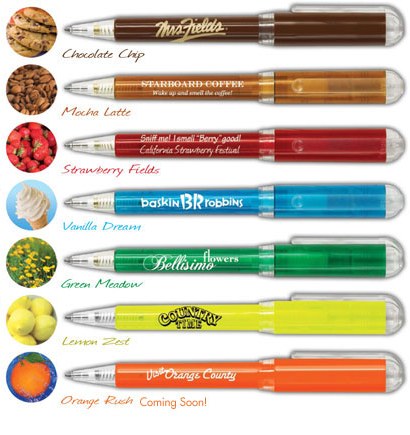
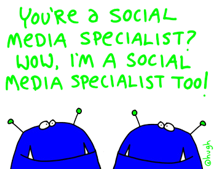 Sometimes just getting started with something new can be intimidating. Social media sounds a little scary. And many small businesses are still trying to discover how they can implement social media into their marketing plans. It’s really not that difficult. And it doesn’t have to be that time consuming. But it does take a little understanding and planning.
Sometimes just getting started with something new can be intimidating. Social media sounds a little scary. And many small businesses are still trying to discover how they can implement social media into their marketing plans. It’s really not that difficult. And it doesn’t have to be that time consuming. But it does take a little understanding and planning.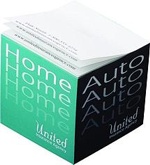 3M
3M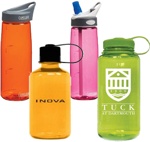 Nalgene and Camelbak
Nalgene and Camelbak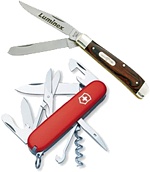 Buck Knives and Swiss Army Knives
Buck Knives and Swiss Army Knives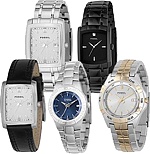 Fossil Watches
Fossil Watches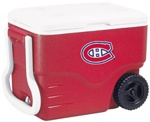 Coleman
Coleman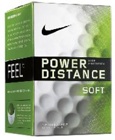 Nike
Nike M&Ms
M&Ms What is the number one complaint customers make about salespeople? According to a survey conducted by the Purchasing Manager’s Association of America, it’s that salespeople talk too much and listen too little.
What is the number one complaint customers make about salespeople? According to a survey conducted by the Purchasing Manager’s Association of America, it’s that salespeople talk too much and listen too little.